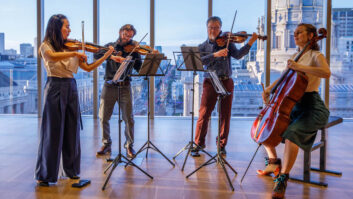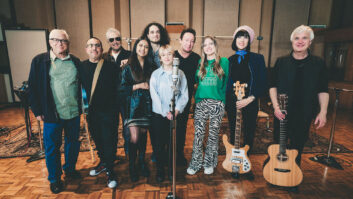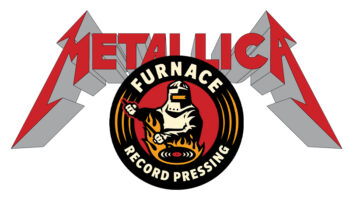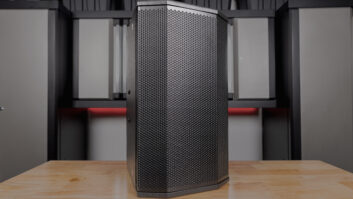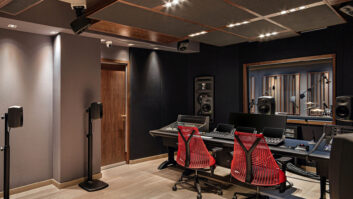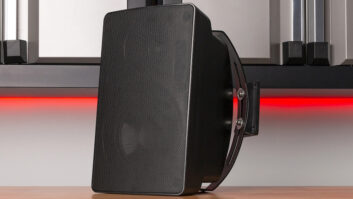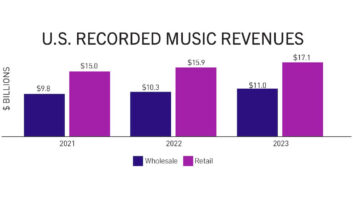
Beverly Hills, CA (November 19, 2019)—The great thing about jazz is that no two live performances, even consecutive takes in the studio, are ever exactly alike, providing a rich vein of material to be mined by record labels championing the artform. One such label, Los Angeles-based Resonance Records, is making 85 minutes of previously unavailable music by multi-instrumentalist Eric Dolphy available, releasing a three-disk set on 180-gram vinyl later this week on November 23—Record Store Day’s Black Friday—and on CD in January, 2019.
“We always look for these wonderful, seminal modern jazz artists,” says George Klabin, founder and president of the non-profit Rising Jazz Stars Foundation, who established Resonance Records in 2008. “He was one of the most important, and died quite young.”
Dolphy, who played saxophone, clarinet, flute and piccolo, came to prominence playing with bandleaders Chico Hamilton, Charles Mingus and John Coltrane. He died tragically in Berlin due to a medical misdiagnosis after falling ill while on tour in June 1964, aged 36. But before he departed for Europe, Dolphy left some personal belongings with friends, including a suitcase containing tapes of two albums produced in July 1963 by Alan Douglas, who later famously worked with Jimi Hendrix.
At AES: Archiving & Restoration Track Looks Back to Plan Ahead At AES
Klabin’s co-president, Zev Feldman, an independent record producer who is also co-president and general manager of Resonance Records, eventually located the monoaural tapes through his connections in the possession of flutist and educator James Newton. “They sound really pretty amazing, almost like they would have been recorded today in a studio,” reports Klabin, noting that the engineer on the sessions was Bill Schwartau, who also worked with Bill Evans, Charles Mingus and Peter, Paul and Mary.
The new set was mastered to vinyl by Bernie Grundman at his Hollywood mastering facility. “He does a great job,” says Klabin. “And we press at RTI, the best pressing company in this part of the world. We very carefully listen to the test pressings. They’re the best at cleaning things up.”
Marking the first official release of previously-unissued Dolphy studio recordings in more than 30 years, Musical Prophet: The Expanded 1963 New York Studio Sessions is being released in partnership with the Eric Dolphy Trust and the Alan Douglas Estate. The set includes Dolphy’s studio albums Conversations, released in 1963, and Iron Man, released posthumously, plus numerous alternate takes and two previously unreleased pieces, one from a WUOM Michigan Radio session. It also features a 96-page booklet of photos and essays.
Klabin opened Sound Ideas, his first studio in Manhattan, in 1969; then, in 1973, he moved to Capitol’s former facility on West 46th Street, where he recorded James Brown, Luther Vandross and Paul Anka, among numerous others. Subsequently relocating to California, he set up the Rising Jazz Stars Foundation in 2005 in response to the scarcity of suitable jazz venues in the L.A. area. “It was hard to find good jazz to listen to, so I purchased the house next door and outfitted it as a studio for recording and for concerts, with up to 60 or 70 people,” he reports. When record labels proved indifferent to releasing his productions with lesser-known jazz artists, he launched Resonance in 2007.
The label began by releasing historically important archive recordings by virtuosic mainstream jazz musicians such as pianist Gene Harris and former Bill Evans bassist Scott LaFaro, who also died young. Unreleased material was becoming harder to find when Resonance hit pay dirt with a Wes Montgomery collection, Echoes of Indiana Avenue. “We did such a beautiful job of packaging and restoration of the sound that I knew we would find material. And things started to come to us,” says Klabin.
Although the type of material can vary tremendously, he says, “We essentially get mono or stereo quarter-inch tapes. Occasionally, they come from the late fifties, but mostly they’re from the sixties, and some from the seventies.”
Newer tapes may suffer from sticky-shed syndrome. “We have the dreaded problem with tapes from the seventies where we have to bake them, sometimes over and over. It’s easy to determine—you can just look at the tape and tell.”
As for sound quality, there is always tape noise and hiss, says Klabin, as these tapes typically date back to before the introduction of Dolby noise reduction. “There are also sometimes spurious noises, like microphones being moved. Then there are issues with the balance, the presence, frequency response or distortion,” he adds.
“We’re able to remedy or greatly improve all these problems. Distortion is the most difficult, but occasionally we can reduce it to an acceptable level. But we don’t normally put out something that is distorted, unless it’s very important and in only a small section.”
Resonance’s principal restoration tool is iZotope’s RX software suite, Klabin reports. “We have had good fortune in having most of our recordings come to us usable. They just need cleaning, balancing within the frequency spectrum and drop-out repairs, all done with RX.
“We also use [Celemony] Melodyne, which is a very interesting tool,” he says, as it essentially breaks a recorded track into its constituent instruments. “You can manipulate a note, if you have to, in ways that only can be done with that program, that I know of.”
Klabin uses Melodyne very judiciously, he says, only fixing the odd clam that would have resulted in a retake in the recording studio. “It’s not fair to put out something where there’s a mistake just because that’s the way it happened. How does that benefit anyone?”
His go-to equalizer is a plug-in from German developer Hofa. “I’ve used many EQs, but the one that I like the best is the Hofa. It has a real-time analyzer at the same time. It’s very intuitive and easy to use, and it’s been my favorite EQ for a few years. “
If the drums are light in the recording, he says, “We sometimes find that if you put a little bit of limiting—not compression—on the final sound, you can create a better sense of presence with the drums versus the rest of the band.” That said, drums recorded too loudly are another matter. “Sometimes, if there’s too much drums, there’s nothing you can do; you have to reject it.”
As Resonance Records celebrates its 10-year anniversary, the label is about to dip a toe into streaming music, making curated compilations of tracks from its historic and current catalogs available across multiple digital platforms beginning in February 2019. “We hope that will bring more awareness to our recordings,” says Klabin.
iZotope • www.izotope.com
Resonance Records • www.resonancerecords.org

